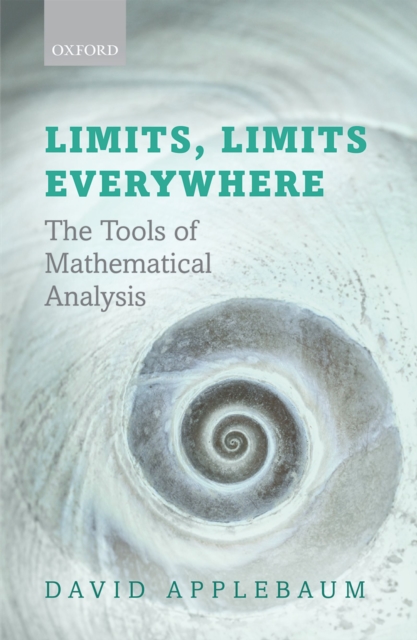
Limits, Limits Everywhere : The Tools of Mathematical Analysis EPUB
by David Applebaum
EPUB
Description
A quantity can be made smaller and smaller without it ever vanishing.
This fact has profound consequences for science, technology, and even the way we think about numbers.
In this book, we will explore this idea by moving at an easy pace through an account of elementary real analysis and, in particular, will focus on numbers, sequences, and series. Almost all textbooks on introductory analysis assume some background in calculus.
This book doesn't and, instead, the emphasis is on the application of analysis to number theory.
The book is split into two parts. Part 1 follows a standard university course on analysis and each chapter closes with a set of exercises.
Here, numbers, inequalities, convergence of sequences, and infinite series are all covered.
Part 2 contains a selection of more unusual topics that aren't usually found in books ofthis type.
It includes proofs of the irrationality of e and π, continued fractions, an introduction to the Riemann zeta function, Cantor's theory of the infinite, and Dedekind cuts.
There is also a survey of what analysis can do for the calculus and a brief history of the subject. A lot of material found in a standard university course on "real analysis" is covered and most of the mathematics is written in standard theorem-proof style.
However, more details are given than is usually the case to help readers who find this style daunting.
Both set theory and proof by induction are avoided in the interests of making the book accessible to a wider readership, but both of these topics are the subjects of appendices for those who are interested in them. And unlike mostuniversity texts at this level, topics that have featured in popular science books, such as the Riemann hypothesis, are introduced here.
As a result, this book occupies a unique position between a popular mathematics book and a first year college or university text, and offers a relaxed introduction to afascinating and important branch of mathematics.
Information
-
Download - Immediately Available
- Format:EPUB
- Publisher:OUP Oxford
- Publication Date:01/03/2012
- Category:
- ISBN:9780191627873
Other Formats
- PDF from £23.01
Information
-
Download - Immediately Available
- Format:EPUB
- Publisher:OUP Oxford
- Publication Date:01/03/2012
- Category:
- ISBN:9780191627873






